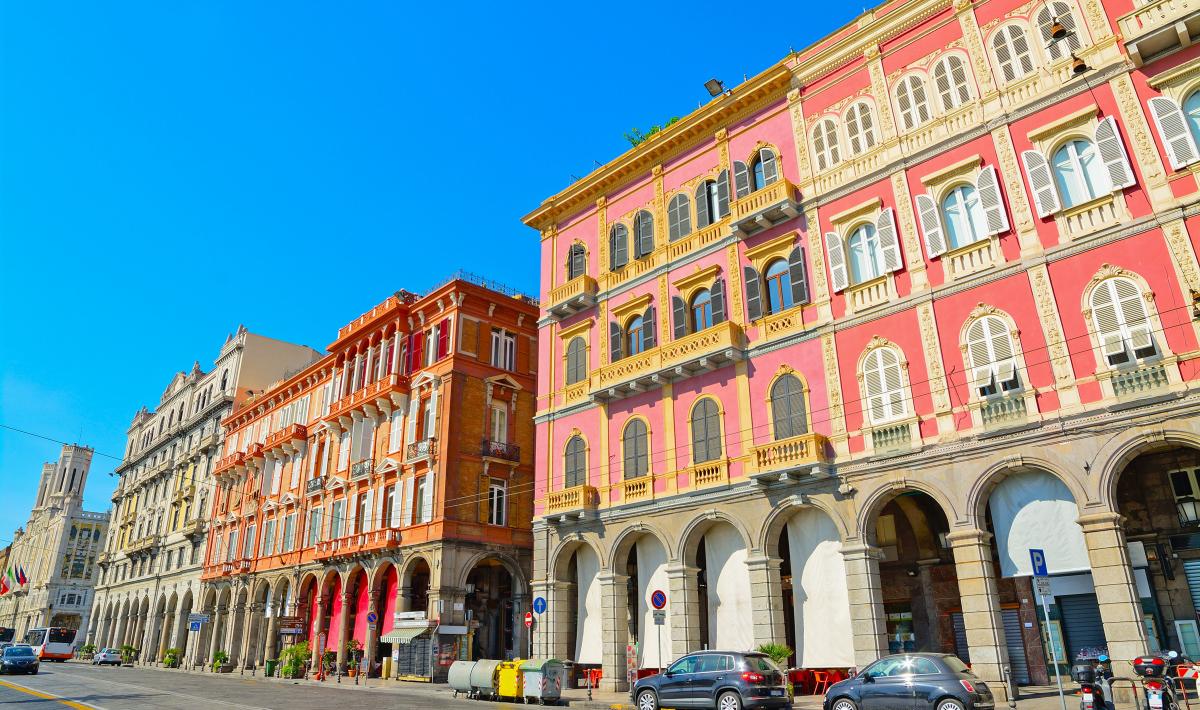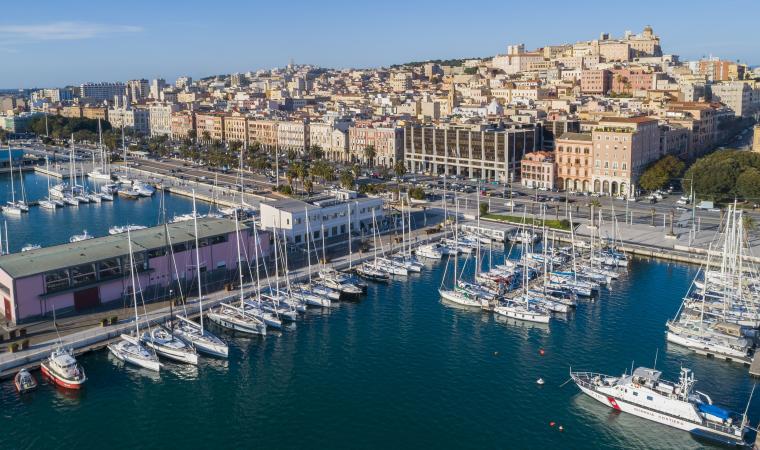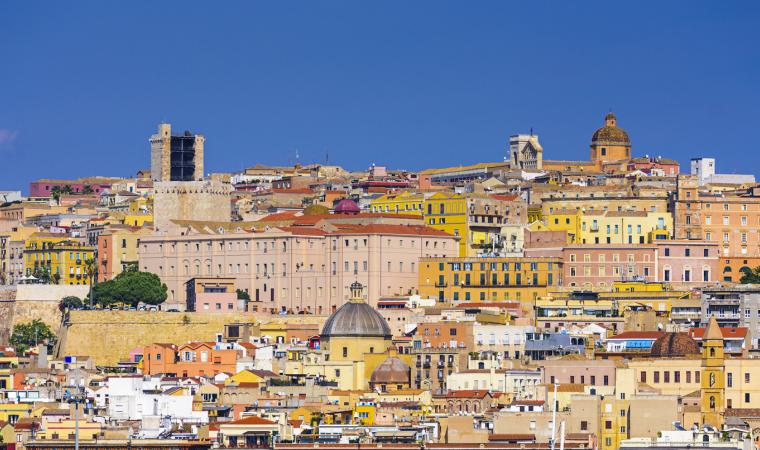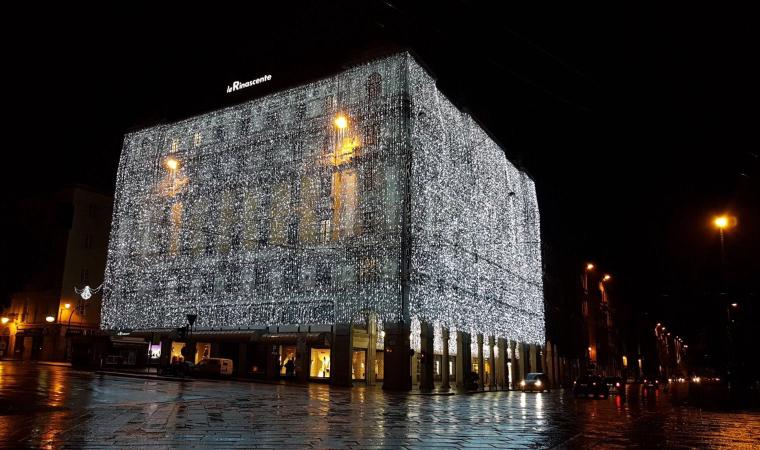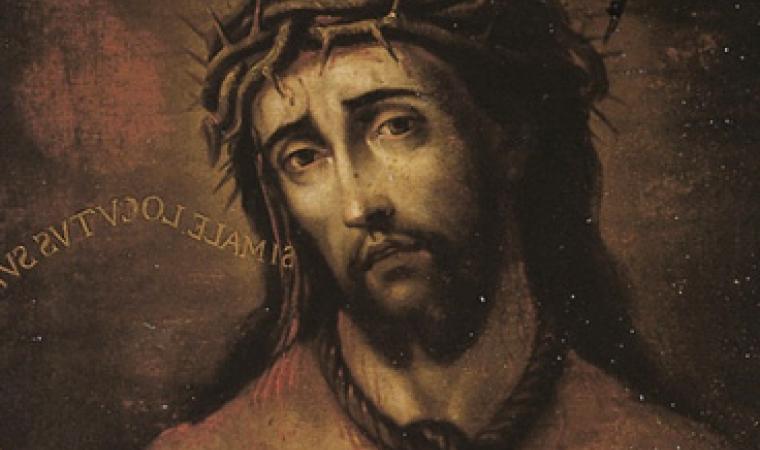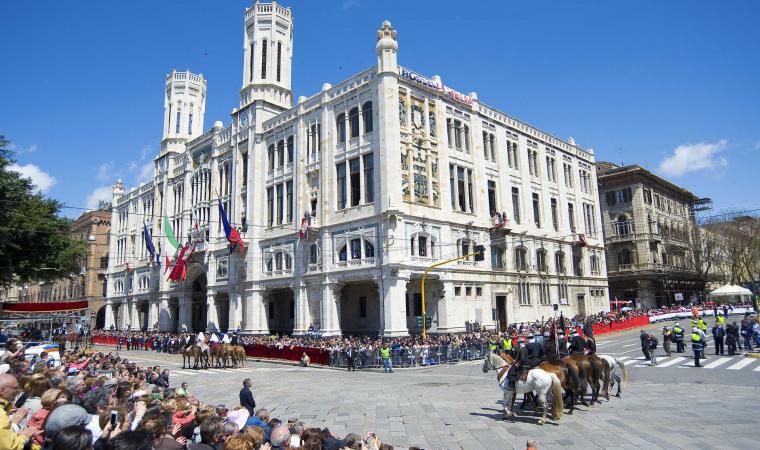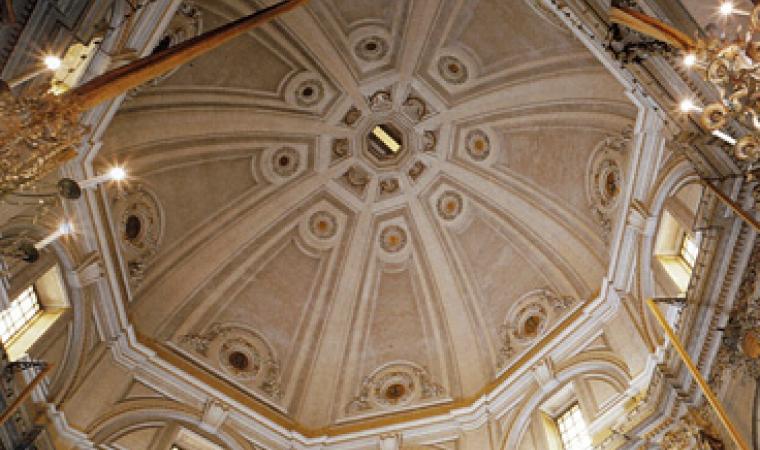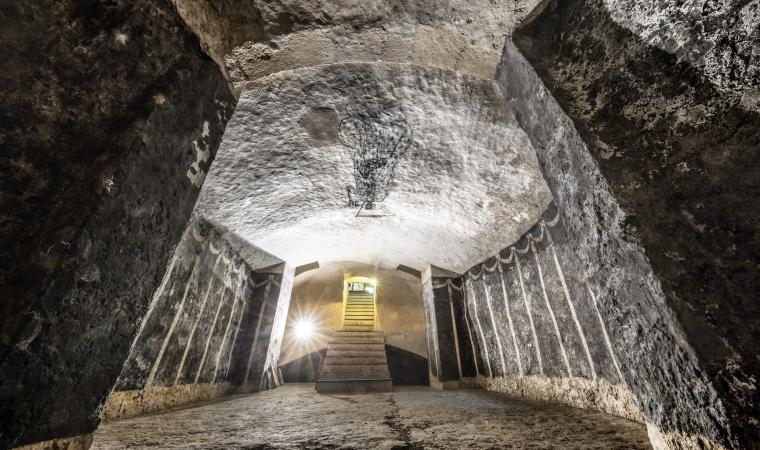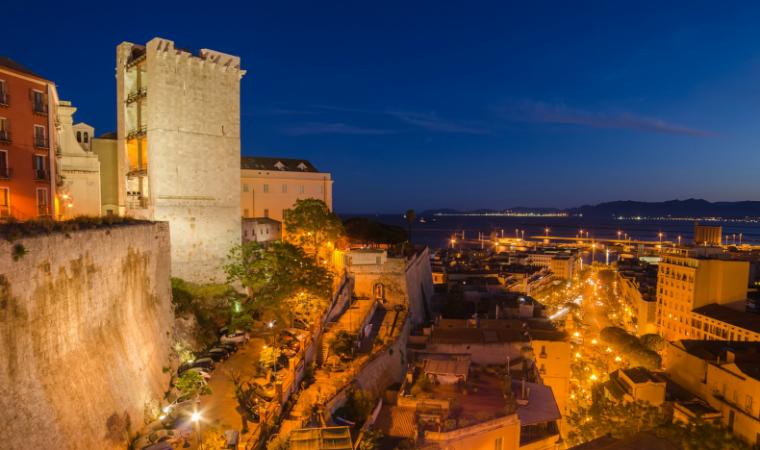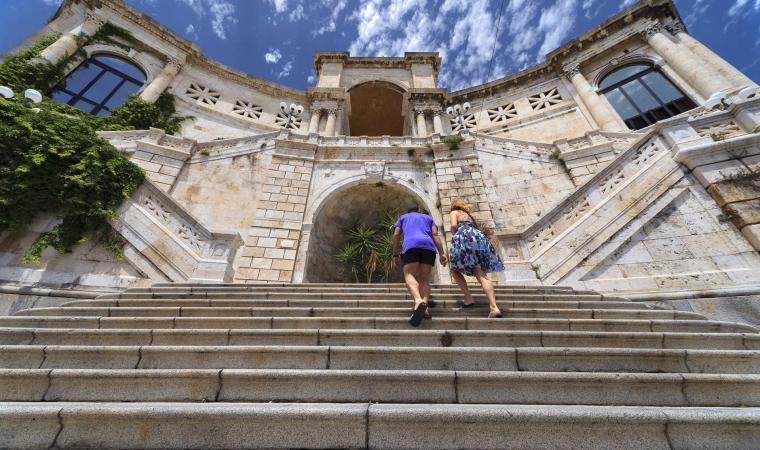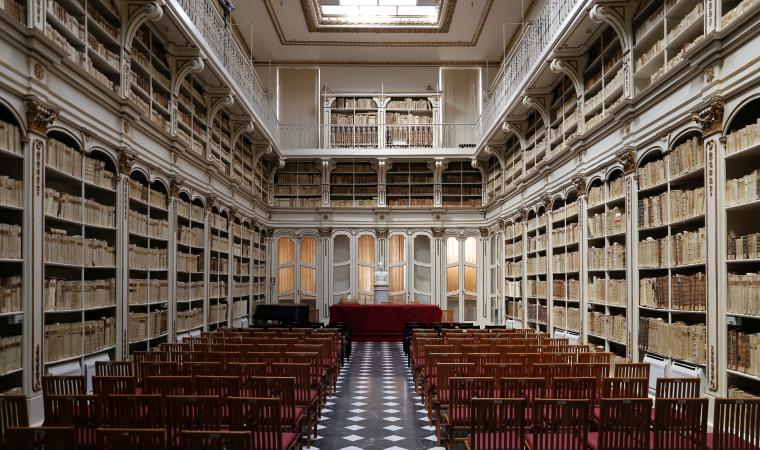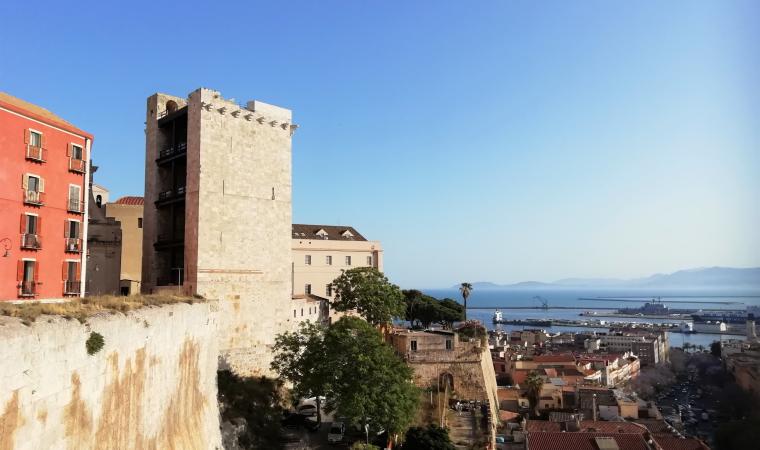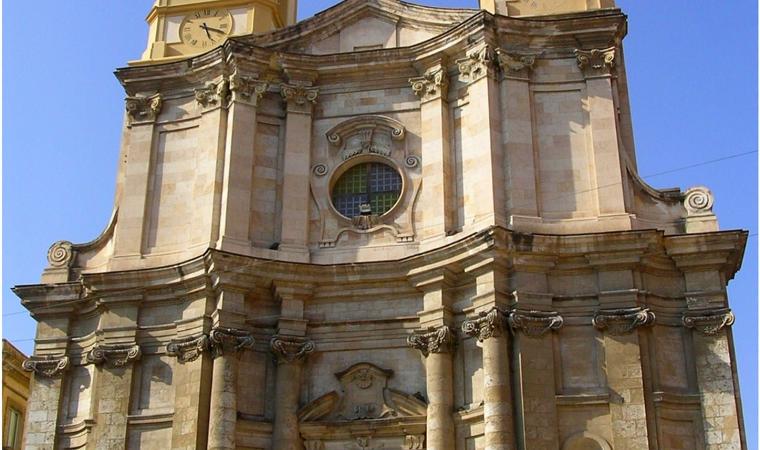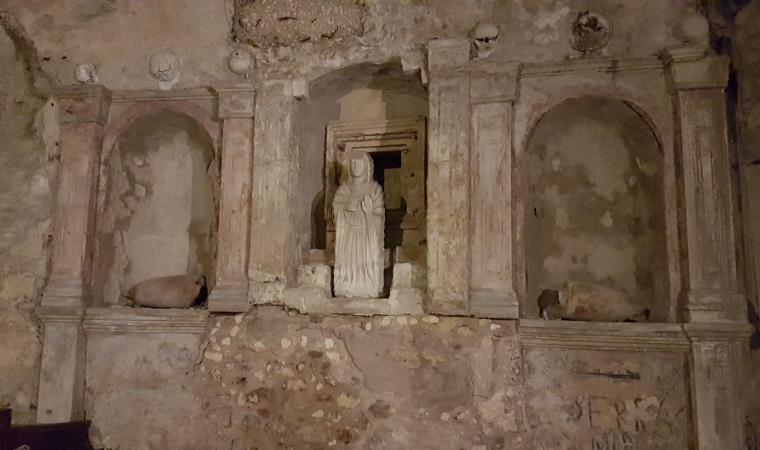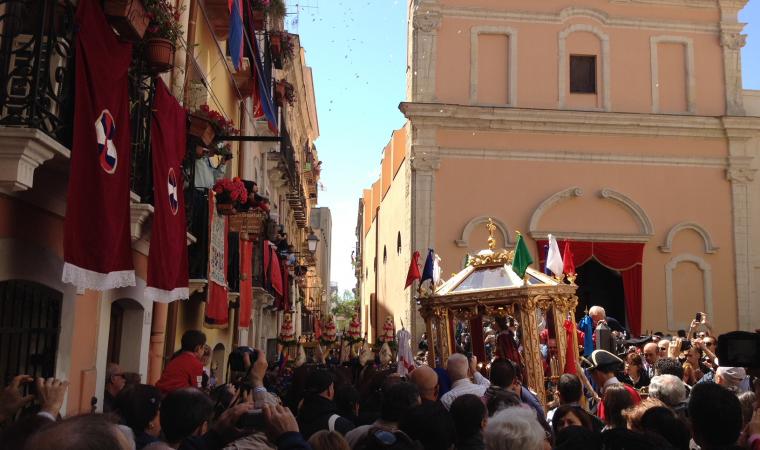For more than a century, it has been one of the symbols of ‘modern-day’ Cagliari, a varied and elegant mixture of colours and architectural styles overlooking the porticoes of Via Roma, which have become a destination for walks and shopping for tourists and residents, accompanied by the scent of the sea breeze. The seafront of the historic Marina district is characterised by a series of buildings constructed from the end of the 19th century, mainly in Art Nouveau style, with neo-Gothic and Renaissance additions. Before then, enclosed between the bastions of the church of Sant’Agostino, at the junction with the present-day Largo Carlo Felice, and the Dock, where the present-day Viale Regina Margherita starts, there were modest two-story homes, in which shops and trattorias were often opened on the ground floor. There were also facilities for leather tanning, while other huts, ‘specialised’ in the sale of fish, occupied the space adjacent to the pier. These were demolished for the construction of the port, starting in 1881, and a few years later a series of buildings started to appear, which you can admire today in all their splendour.
In reality, they were added to the pre-existing Palazzo Devoto, built in 1870 and next to the late seventeenth-century church of San Francesco da Paola. The first were the Magnini Palaces, on the two corners between Via Roma and Via Baylle. Later, Palazzo Vivanet was built and was the first example of neo-Gothic architecture in the city, with a series of porticoes with pointed arcades; Palazzo Garzia, between Via Napoli and Via Barcellona, and Palazzo Leone-Manca, which contained the Olympia Cinema until recently. Beyond the church, Palazzo Vascellari-Beretta and Palazzo Ravenna were built, between which there is the modern building in which the Regional Council of Sardinia is located. The stretch facing Piazza Matteotti is dominated by the Palazzo Civico (Town Hall). It was inaugurated in 1907 and represents the choice, with a strong ideological nature, of the municipal administration in office at the time, led by Ottone Bacaredda, to move the centre of the city’s power from the ‘aristocratic’ Castello district to the Marina district. The building is made of white limestone, with Art Nouveau decorations and references to Gothic-Catalan models: you will particularly be drawn to the two octagonal turrets and the four obelisks in the corners.
Marina is a district to explore, losing yourself along its narrow little streets, looking around the shops and tasting the town’s traditional dishes at the numerous restaurants and taverns. In the ‘heart’ of the district, stands the Parish Church of Sant’Eulalia. In its basement, you can visit the archaeological area and the monumental crypt. Next to the church, you’ll find the Treasure Museum, containing a vast artistic heritage from the adjacent sanctuary and the churches of Santa Lucia and the Holy Sepulchre, as well as the documents from the parish archive and the archconfraternities of the Crucifix and the Holy Trinity.

